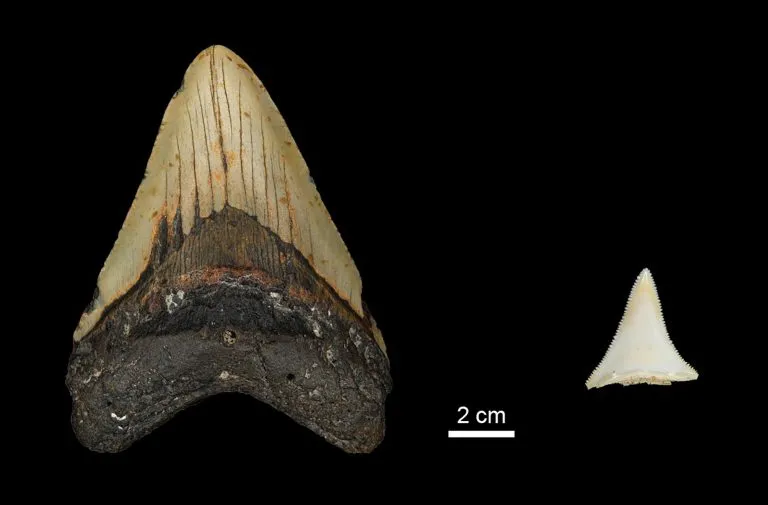In a new study By analyzing the zinc stable isotope ratio in the teeth of megatoothed shark and great white shark, the researchers compared the position of megatoothed shark and great white shark in the food chain They found that the prey of the two species may overlap, so the diet competition with the great white shark may have contributed to the extinction of the great toothed shark

The giant toothed shark (Otodus MEGALODON) lived in the global ocean from 2.3 million to 3.6 million years ago, and its body length may reach 20 meters. For comparison, the total length of the largest great white shark today is only 6 meters. Many factors have been discussed to explain the megalopolism and extinction of megaodontoid sharks, and their diet and diet competition are often considered to be the key factors.
In this study, the researchers analyzed the zinc stable isotope ratios in the teeth of modern and fossil sharks from all over the world, including megaodon sharks and modern and fossil great white sharks. This new method enables scientists to investigate the nutritional level of an animal, indicating how far up the food chain an animal is. The zinc stable isotope analysis of tooth enamel (the highly mineralized part of teeth) is comparable to the nitrogen isotope analysis of more mature tooth collagen, which is the organic tissue of tooth dentin and is used to evaluate the consumption of animal substances.
However, "on the time scale we investigated, collagen has not been preserved, so traditional nitrogen isotope analysis is impossible," explained Jeremy McCormack, the lead author and a researcher at the Max Planck Institute for Evolutionary Anthropology and Goethe University in Frankfurt. Thomas t ü tken, a professor at the Institute of Geosciences of Gutenberg University, added: "here, we have proved for the first time that the zinc isotope characteristics related to diet are preserved in the highly mineralized enamel crown of fossil shark teeth."
Using this new method, the research team compared the tooth zinc isotope characteristics of several extinct early Miocene (20.4 million to 16million years ago) and early Pliocene (5.3 million to 3.6 million years ago) species with the teeth of modern sharks. "We noticed the consistency of zinc isotope signals in fossils and modern simulation groups, which strengthened our confidence in this method and showed that there may be the smallest difference in zinc isotope values at the bottom of the marine food web, which is a disturbing factor in nitrogen isotope research," explained Sora Kim, a professor from the University of California, Merced.

Subsequently, the researchers analyzed the zinc isotope ratios in the teeth of megaodon sharks from the early Pleistocene, Otodus chubutensis from the early Miocene, and in contemporary and modern great white sharks to investigate the impact of these landmark species on the past ecosystem and each other. "Our results show that megatoothed sharks and their ancestors are indeed top predators, feeding at the top of their respective food chains," said Michael Griffith, a professor at William Patterson University. "But what is really striking is that the zinc isotope values of early Pleistocene shark teeth from North Carolina indicate that the nutritional levels of early great white sharks and much larger megatoothed sharks basically overlap."
Kenshu Shimada, a professor at DePaul University in Chicago, pointed out: "these results may mean that there is at least some overlap between the prey of these two sharks. Although more research is needed, our results seem to support the possibility of diet competition between megatoothed sharks and great white sharks in the early Pliocene."
New isotope methods such as zinc provide a unique window into the past. "Our study demonstrates the feasibility of using zinc isotopes to investigate the diet and nutritional ecology of extinct animals over millions of years. This method can also be applied to other fossil animal groups, including our own ancestors," McCormack concluded.